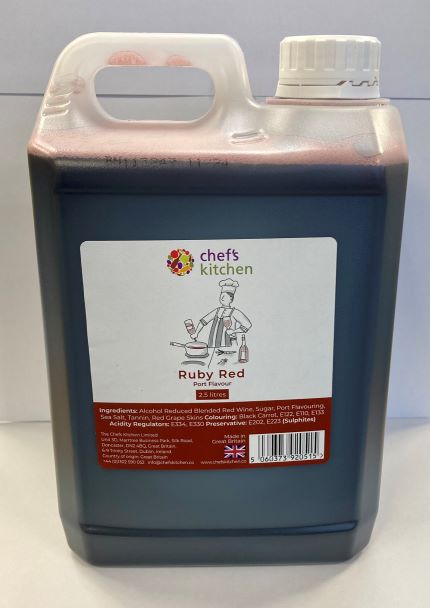


Baking with wine burns off very little alcohol

The longer you simmer wine in a sauce, the more alcohol will be burned off (it would take a good three hours for the alcohol to completely evaporate). Consider whether you want alcohol in your dish or cake.A bitter wine can work well with salty foods, as the salt softens the wine.A low tannin red wine will result in a smoother sauce.If the dish is quite acidic, choose a low acidity wine to maintain balance.Here are a few key basic rules to remember that will help you decide which wine to reach for.
#Cooking port wine full#
Meats (or sometimes vegetables) are left coated or soaking in the marinade for an extended period of time prior to cooking, so that they’re packed full of flavours and juices by the time they hit the grill.Įverything from tannins, acidity, sweetness, aromas and flavours of a wine will shape the dish you’re cooking (or baking). Wine is a common ingredient used in marinades, which are basically a mixture of herbs, spices, liquids and other ingredients. Port wine is used in baked desserts (usually containing fruits), white wine is a popular ingredient in baked chicken dishes, while Prosecco and Champagne are sometimes used as a luxury ingredient in cakes. Wine is often thrown into the mixture when baking as well. This technique, known as deglazing, is commonly used with roasted or sautéed meat, collecting all the flavoursome juices and brown bits from the pan to save them going to waste! Pouring wine onto a used cooking pan and then reheating it can help you capture all of the flavours into a pan sauce. The flavour of the wine is concentrated and the alcohol evaporates, leaving you with a sauce beautifully infused with the wine’s key tasting notes. This is a staple way of using wine that involves mixing it with other ingredients and reducing over heat. Such wines are also perfect for apple and pear based pies or tarts, as well as anything with a vanilla focus. Reach for a bottle of sweet Riesling or Gewürztraminer if you’re poaching peaches or pears. Richer whites such as Chardonnay tend to pair better with mushrooms and other fungi foods.įor desserts, whites tend to complement citrus recipes and infuse flavours nicely into light, creamy tarts and puddings. Think Sauvignon Blanc or Verdejo for this, as they are easy to cook with and won’t overpower the dish. Coordinating the fresh, herby nature of green veg with a splash of fruity and floral white wine works well. Sauvignon Blanc is a reasonably safe option, but if you’re roasting you might want something a bit richer like Chardonnay.įor vegetable dishes, opt for lighter white wines. A general rule of thumb is the lighter the meal, the lighter the wine. When it comes to chicken and turkey, your go-to drop may vary depending on preference. Seafood such as lobster and shellfish are considered more full-bodied, so are better partnered with creamier, full-bodied whites like Chardonnay. Stick to dry, crisp whites like Pinot Grigio or Sauvignon Blanc for best results. Lean, white fish is a classic example of a food that’s best complemented by white wine. When it comes to delicious desserts, red wine is more appropriate for berry and chocolate recipes. Anything with a strong hint of plum would be a great additional touch for duck dishes! ‘The darker the meat, the darker the red’ is always a good principal to follow, and it’s also worth considering the flavours and aromas of the wine too. You can also add a splash of red wine when cooking some darker white meats, including duck, goose, pigeon and pheasant. Pinot Noir is the go-to for complementing the rich and gamey flavour of venison, although medium-bodied reds such as Côtes du Rhône and Chianti are good alternatives when roasting. Lamb needs a wine with smoother tannins, so Shiraz or Malbec are both good medium-bodied options to use here. Leaner red meats like lamb and venison require a lighter red wine. Multi-ingredient beef dishes such as a beef stew or a beef bourguignon are best cooked with a medium red, such as Zinfandel or Côtes du Rhône. For fattier cuts of beef such as a ribeye, using a full-bodied wine Cabernet Sauvignon does something magical to the flavours. For beef, we generally say leaner cuts and fillets benefit from a light and bright red such as Pinot Noir, especially if being served closer to rare.


 0 kommentar(er)
0 kommentar(er)
